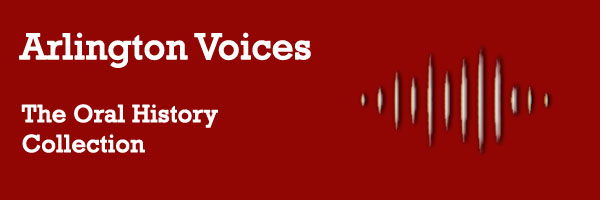
Interview with Agnes Quade
In observance of Veteran’s Day, the staff at the Center for Local History present a clip of an oral history interview with Charles and Agnes Quade, who recalls attending the first dedication of the Tomb of the Unknown Solider, at Arlington National Cemetery on November 11, 1932. After some research about Sgt. Frank Witchey (spelled Witchie here) we have determined that Mrs. Quade misspoke during her interview and based on her information about meeting the Sergeant, she was actually there on the original dedication date in November 1921 (thank you to an eagle-eyed patron for pointing this out to us!).
In this segment, Mrs. Quade shares her memories of seeing Sergeant Witchey - a man her husband would eventually meet - play Taps at the Unknown Soldier’s tomb.
NARRATOR: Agnes Quade
INTERVIEWER: Theda Nichols
DATE: May 3, 1975
TN: Now, while we’re on the War subject, didn’t you tell me that you had attended the first dedication of the Unknown Soldier in 1932?
AQ: Yes.
TN: Uh-huh.
AQ: I did.
TN: Could you tell me what you remember about that?
AQ: And that was just a wonderful, impressive occasion. I went out to the National Cemetery, to the Amphitheater. And my mother was here from Atlanta, Georgia, at the time – had come 600 miles; and I thought, “Oh, how wonderful [that] we are here for such a solemn day.” It meant so much to everyone.
And when we arrived, out at the Cemetery, I asked one of the men who had charge of the services if it would be possible that we could get a seat.
And he said, “Oh, no!” – that all the seats were taken, and that others – we just didn’t have any room for anyone else in the Amphitheater; we could stand outside, and we could hear, probably.
And I said, “But my mother’s here, and she’s from Atlanta, Georgia.”
He said, “Just a minute, Lady.”
And over he came with two tickets, which I still have – and I treasure! – and brought me a program. And he ushered us in to about the fourth row of the Amphitheater.
And it was a very solemn service. I have Kodak pictures of the first Unknown Soldier’s Tomb – with the wreath, and with the colors, the flags, and the different divisions of the military, which were at that particular service.
And I would like to add there that the man, who was Sgt. Witchie, is a wonderful bugler – played “Taps” that day over the Unknown Soldier’s Tomb – on November the 11th, 1932.
And in several years, my husband happened to meet Sgt. Witchie; and now we have an autographed copy, a picture, framed, of him playing “Taps” at the Unknown Soldier’s Tomb on November the 11th, 1932.
You can find Charles and Agnes Quade’s interview in its entirety at the Center for Local History- VA 975.5295 A7243oh ser.2 no.24
The goal of the Arlington Voices project is to showcase the Center for Local History’s oral history collection in a publicly accessible and shareable way.
What is the oral history collection?
Oral history is a popular method of research used for understanding historical events, actors, and movements from the point of view of people’s personal experiences.
The Arlington Public Library began collecting oral histories of long-time residents in the 1970s, and since then the scope of the collection has expanded to capture the diverse voices of Arlington’s community. In 2016, staff members and volunteers recorded many additional hours of interviews, building the collection to 575 catalogued oral histories.
To browse our list of narrators indexed by interview subject, check out our community archive. To read a full transcript of an interview, visit the Center for Local History located at Central Library.







